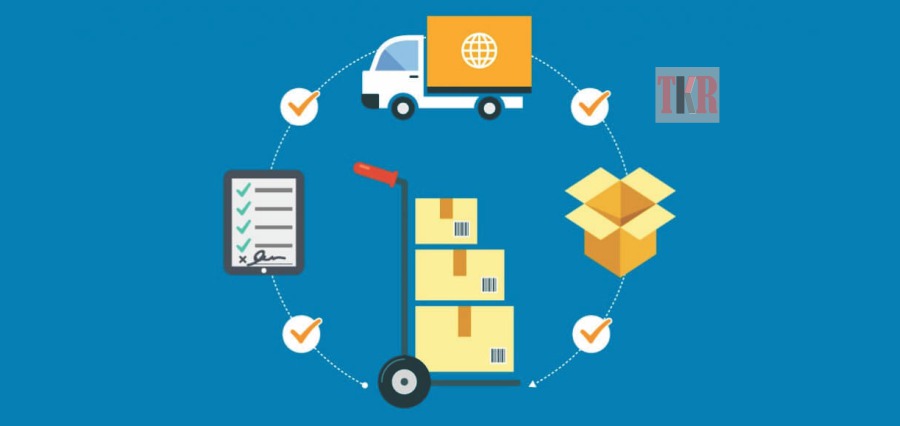The supply chain is playing a prominent part in-home delivery, and everyone is getting into the game of home delivery, yet the biggest e-trailers and so-called disrupters in the transportation are unable to show profit. In fact, shipping retailer, wholesalers, and manufacturer, the direct to home delivery, is eating away the bottom line. Omni- channel- profitable, and efficient anywhere fulfillment is the goal, perfect on un-delivery, excellent, in-home service, are all part of the game, meeting customer demands while maintaining profitable margin is not an easy task.
Today retailers are spending millions of rupees on building, new warehouses, for the fulfillment, of other activities. They are offering customers a variety of transporters, servicing mostly at a fixed rate, shipments of parcels, retailers mostly often present a simplified rates from carrying major parcel carrier to the consumer, but this is not the true cost, that the retailers may be paying, since due to high demand major carriers introduce the weight rates in order to bring the challenges for the retailers.
Customer asking, for free delivery in-home delivery in supply chain context, can siege the opportunity of heavy weight items, but the retailer is a sustainable situation.
Literature Review
A home delivery in a supply chain has to be sharper, as the financial sustainability is important, and as the transportation or carriers have to be modestly profitable, by using routing and rating approaches that are finally turned to an actual output, the distance dimension of packages, and the service factors that are taken into consideration. In retail home delivery in a supply chain, since it is a backward descent the system is old and has been set as long before, and the cost in transporting is known by the facts.
Traditional buyers use the transportation system as the buyers usually shop around for better rates and services and try to find inequitable good service and price.
If delivery is considered important to consumers their the option should be adopted by the retailer, and to do this retailer needs to consider delivery as a part of the order, and not after through as this is important, since the consumer world prefer to visit the shop for the availability, and touch and feel, and also the options of shipping, since they usually constitute to have a wide view of the order, and thus also the retailers progress in shipping the goods. The retailer all-inclusive view the order as the product availability, location, customer location, service requirements, and what it means that will take to successfully fulfill them which are essential in order to optimize the delivery services.
Research Methodology
In order to make this a profitable, for a smart delivery panning has to be done to plan, while the customer is making an order, and not later on and on immediately on beginning to evaluate the options, the retailer to predict to attractive services, and delivery approaches to the customer. Customer can intend to select retailers and the option is a leverage to ship or transport from the store, and not necessarily from warehouses, as the store will be closer for the customer and thus reducing delivery time, and costs, since many facilities, which are on the rise, the option for the customers exact location, is also very precise, and the retailer may also be able get the customer to deliver from the store, which serves further delivery costs.
The selling point of e-grocery is that it offers more convenience than the neighborhood store, but to be sustainable they have to do this cost-effectively, and this is not easy to pull out. As people are used to either picking up the phone, and ordering from their local nearby store, that offers credit, or making two or more trips to the grocery store, one for the monthly purchase, and other important buys. This has been the general trend for a very long time. In order to get people to try to e-groceries, and to get them believe that the products will be delivered fresh, on time, and with post-purchase service if need be, pose a serious challenge. Added to this is the “touch and feel” in case of on-line perishables. The FMCG is getting their items pre-packed, cutting out the “feel” factor and the task of selling the product to make it onerous.
In the age of internet the price tag system becomes a lot more tenuous, and shopping online, means the computer price is seen, and this kind of discrimination based on income is not very harmful to society, in-home delivery in supply chain, and in a country where the UPS type of system in service, the challenging part is the good delivery network, solving the challenge of deploying an army of delivery men in a complex attitude, who cut through with motorbikes and make home delivery logistic a success in supply chain
There are also good times ahead for the consumers to fully convert the online home delivery in supply either grocery or allied store items. Organized grocery or retails are under-penetrated and unprofitable due to high rents and utility bills. As a result, is finding a good store, which carries all that the customer requires needs is not always possible.
The local store where the consumer usually buys is always too small and is able to keep an inventory of only 1000 SKU’s and hence this has become the difficulty to cater to the needs of the customers.
Traffic all over the world has become a problem lack of finding a space for parking; frequent out-of-stock situations are some of the main problems that are faced by the customers when going through strenuous shopping of physical stores.
Findings/Problems
Problems faced by home delivery is the traceability which is a major part in the supply chain since there is more demand, request from customers, now want to know where all the products are sourced, the ingredients that make the product, and make an attempt to trace them.
The supply chain should give authentic information of every step of the food supply chain in-home delivery, and enhance safety, strengthen brand integrity and customer footfall and loyalty.
Inadequate communication between the customer, since frequent information is required, lack of communication can have infer an impact on food supply and home delivery in supply chain, since communication can lead to complications among suppliers and the customers.
Costs, logistics freight, manpower, and investment in technology are some of the signs that keep checking on the operating costs and challenge in-home delivery.
Control of inventory in storehouses, retailers, wholesalers are a major problem in order to control costs, and maintain quality and satisfy customers, since proper inventory have to be maintained, and carefully managed.
Buying grocery or allied items through e-tailing and affecting home delivery in supply chain is the same month-on-month. Hence customers are very familiar with products and do not feel the need for touch and feel as majority of the products are in good condition, and this issue of easy return policies can convert customers.
Sourcing, since people or the population, what they are buying in e-tailing when it comes to packaged items and the home delivery system, as it involves standard products, also with short life, and proper handling. This is apart from handling multiple products or SKU’s in e-tailing, or e-sourcing unlike the products with tamper-proof packages are made to protect the contents. The essentials imply to apply higher logistics costs to ensure there are lesser damages as possible to products in-home delivery in supply chain.
It is also empirical that the storage standards that vendors have to meet before the products are accepted in the warehouse. If the customer gets a product that is not up to the mark the policy of question arising that the products will be returned.
Personnel should be trained for the handling of products, besides a good part of the investment should be envisaged in e-tailing, with good equipment, in case grocery proper chilling/freezing equipment to handle storage, at its hubs and with proper delivery transportation. A large proportion should be concentrated on high inventory holding as this requires proper home delivery in supply chain activities.
Home delivery in supply chain should use technology, data science to zero the right markets thereby minimizing loss of resources including inventory, finance and time, and take up additional factor of the accessibility of the markets assisted by a mapping solutions, as this becomes also an integrated technology at the time of sales selling with algorithm led customized retail selling in supply chain.
Apart from technology advances in-home delivery in supply chain, with the uses of drones, thus reducing time from factory to market, and ensuring the stock are of minimum inventory at given a point of time, there should be a system for a “continuous replenishment system”, which is an aspect in a traditional distribution system environment, which plays an important role of pushing the stock to the distributor which focus on distributing the stock on home delivery in a supply chain.
When there is ample time to market the stocks, since carrying stocks is of higher cost, in the form of working capital, and this has a bearing on the cash flow in a home delivery in supply chain, but with lower stock flow, one benefit with reduced inventory carrying cost, and the benefit you are carrying lower inventory, and there are lesser risk and damage in a home delivery in supply chain, and the initially the sales forces are not rewarded on the stock stored, but on timely delivery of home products in supply chain.
Conclusion
Take the courier service E-tailing has made this function an important through electronic media, as the business needs to send goods regularly online, as this constitutes an important home delivery service in supply chain, and also errand service where delivery of goods for the complete purchase on behalf of the client, and home delivery is constituted. Also, the consideration of the newspaper being delivered at home, the logistic supply in supply chain is an efficient way the organized delivery is made in supply chain. Since the pickup and delivery is the greatest physical strength, in logistic, with the drugs being delivered at door step makes home delivery in supply chain a great of the activity, thus reducing time, and the impact on laundry services clothes being picked from home on logistic system adopted and delivery made at home in time as per requirement is an achievement in supply chain, and this has paved way, constituted a great enhancement in-home delivery supply chain.
Home delivery should come without disruption, fast delivery, and if also necessary free delivery, being reinforced each and every day, according to circumstances. To effectively compete for in-home delivery, it is always essential to have rapid, and free delivery to the customer where expectation is based on the requirement as per the demand of the product or brand.
About the Author
The article is written by P. Viswanathan, a Sr. Faculty in N.C Member of Indian Institute of Materials Management. He holds a master’s degree In Commerce, Post Graduate Diploma in Business Management, Graduate Diploma in Materials Management, and Diploma in Import-Export Management. Before turning over to the education arena, Viswanathan has held diverse roles in his occupational journey from Logistics to Accounting to Management. He has delivered guest lectures on Inventory Control and Material Management. He has also attended more than a hundred programs on Logistic/Supply Chains and an article on logistics supply chain.









